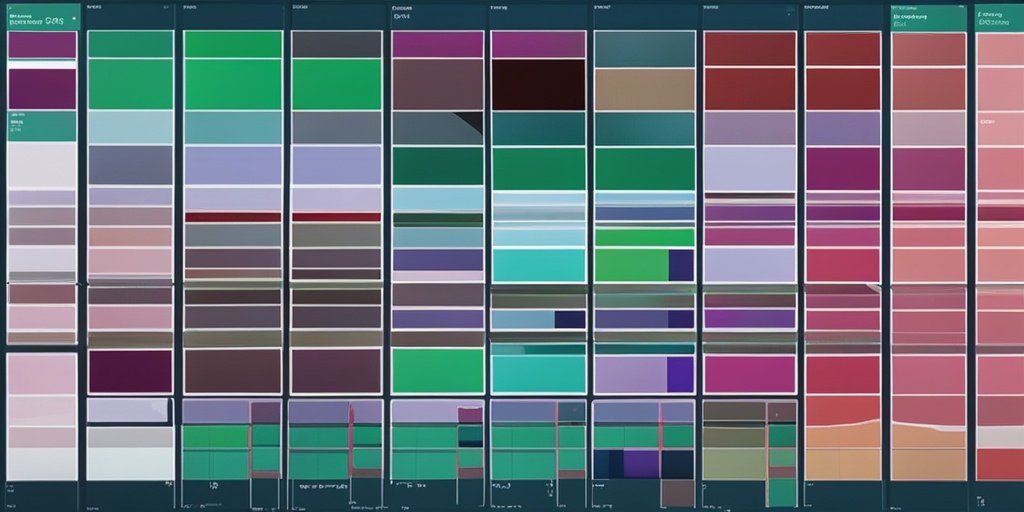⚡ Quick Summary
This study introduces a novel approach to classify cell subtypes in colon tissues using style-transferred digital pathology on hematoxylin and eosin (H&E) stained slides. The method achieved promising results, particularly in identifying helper T cells and epithelial progenitors, showcasing the potential of inter-modality learning in histological analysis.
🔍 Key Details
- 📊 Dataset: Utilized multiplexed immunofluorescence (MxIF) for cell classification.
- 🧩 Features used: 14 subclasses of cell types.
- ⚙️ Technology: Style transfer techniques applied to synthesize virtual H&E.
- 🏆 Performance: Positive predictive values of 0.34 ± 0.15 for helper T cells on virtual H&E.
🔑 Key Takeaways
- 📊 First-time classification of helper T and epithelial progenitor nuclei on H&E.
- 💡 Inter-modality learning allows for labeling previously un-labelable cell types.
- 👩🔬 Study highlights the limitations of traditional H&E staining in cell subtype classification.
- 🏆 Achieved upper bound positive predictive values of 0.43 ± 0.03 for helper T cells on real H&E.
- 🌍 Potential applications in clinical diagnostics and research settings.
- 🧬 Advances in digital pathology could enhance our understanding of disease mechanisms.
- 🔬 Study published in the Journal of Medical Imaging (Bellingham).
- 🆔 PMID: 39507410.

📚 Background
Understanding cellular communication and relationships is crucial for advancing our knowledge of human physiology and pathology. Traditional histological techniques, particularly the use of hematoxylin and eosin (H&E), have been foundational in tissue analysis. However, the classification of specific cell subtypes often necessitates additional staining methods, which can complicate the analysis and interpretation of results.
🗒️ Study
The research aimed to address the challenges of classifying cell subtypes in colon tissues stained with H&E. By leveraging the detailed cell classification data from multiplexed immunofluorescence (MxIF), the authors created a comprehensive annotation system for 14 distinct cell subclasses. They then employed style transfer techniques to generate realistic virtual H&E images, which were used to train a supervised learning model.
📈 Results
The study demonstrated that on virtual H&E, the model could classify helper T cells and epithelial progenitors with positive predictive values of 0.34 ± 0.15 and 0.47 ± 0.1, respectively. When evaluated on real H&E, the model achieved upper bound positive predictive values of 0.43 ± 0.03 for helper T cells and an impressive 0.94 ± 0.02 for epithelial progenitors, indicating a significant advancement in cell subtype classification.
🌍 Impact and Implications
This research represents a significant leap forward in the field of digital pathology. By successfully classifying previously un-labelable cell types, it opens new avenues for understanding the cellular landscape in various diseases, particularly in oncology. The integration of artificial intelligence and advanced imaging techniques could enhance diagnostic accuracy and pave the way for personalized medicine approaches.
🔮 Conclusion
The findings from this study highlight the transformative potential of style-transferred digital pathology in histological analysis. By enabling the classification of complex cell types on H&E, this approach not only enhances our understanding of cellular interactions but also sets the stage for future innovations in medical diagnostics. Continued exploration in this area promises to yield valuable insights into human health and disease.
💬 Your comments
What are your thoughts on the advancements in digital pathology and their implications for healthcare? We invite you to share your insights! 💬 Leave your comments below or connect with us on social media:
Data-driven nucleus subclassification on colon hematoxylin and eosin using style-transferred digital pathology.
Abstract
PURPOSE: Cells are building blocks for human physiology; consequently, understanding the way cells communicate, co-locate, and interrelate is essential to furthering our understanding of how the body functions in both health and disease. Hematoxylin and eosin (H&E) is the standard stain used in histological analysis of tissues in both clinical and research settings. Although H&E is ubiquitous and reveals tissue microanatomy, the classification and mapping of cell subtypes often require the use of specialized stains. The recent CoNIC Challenge focused on artificial intelligence classification of six types of cells on colon H&E but was unable to classify epithelial subtypes (progenitor, enteroendocrine, goblet), lymphocyte subtypes (B, helper T, cytotoxic T), and connective subtypes (fibroblasts). We propose to use inter-modality learning to label previously un-labelable cell types on H&E.
APPROACH: We took advantage of the cell classification information inherent in multiplexed immunofluorescence (MxIF) histology to create cell-level annotations for 14 subclasses. Then, we performed style transfer on the MxIF to synthesize realistic virtual H&E. We assessed the efficacy of a supervised learning scheme using the virtual H&E and 14 subclass labels. We evaluated our model on virtual H&E and real H&E.
RESULTS: On virtual H&E, we were able to classify helper T cells and epithelial progenitors with positive predictive values of 0.34 ± 0.15 (prevalence 0.03 ± 0.01 ) and 0.47 ± 0.1 (prevalence 0.07 ± 0.02 ), respectively, when using ground truth centroid information. On real H&E, we needed to compute bounded metrics instead of direct metrics because our fine-grained virtual H&E predicted classes had to be matched to the closest available parent classes in the coarser labels from the real H&E dataset. For the real H&E, we could classify bounded metrics for the helper T cells and epithelial progenitors with upper bound positive predictive values of 0.43 ± 0.03 (parent class prevalence 0.21) and 0.94 ± 0.02 (parent class prevalence 0.49) when using ground truth centroid information.
CONCLUSIONS: This is the first work to provide cell type classification for helper T and epithelial progenitor nuclei on H&E.
Author: [‘Remedios LW’, ‘Bao S’, ‘Remedios SW’, ‘Lee HH’, ‘Cai LY’, ‘Li T’, ‘Deng R’, ‘Newlin NR’, ‘Saunders AM’, ‘Cui C’, ‘Li J’, ‘Liu Q’, ‘Lau KS’, ‘Roland JT’, ‘Washington MK’, ‘Coburn LA’, ‘Wilson KT’, ‘Huo Y’, ‘Landman BA’]
Journal: J Med Imaging (Bellingham)
Citation: Remedios LW, et al. Data-driven nucleus subclassification on colon hematoxylin and eosin using style-transferred digital pathology. Data-driven nucleus subclassification on colon hematoxylin and eosin using style-transferred digital pathology. 2024; 11:067501. doi: 10.1117/1.JMI.11.6.067501